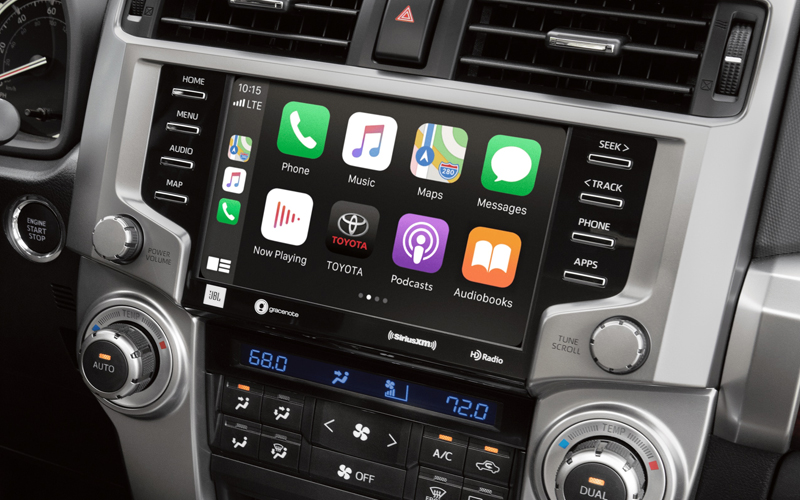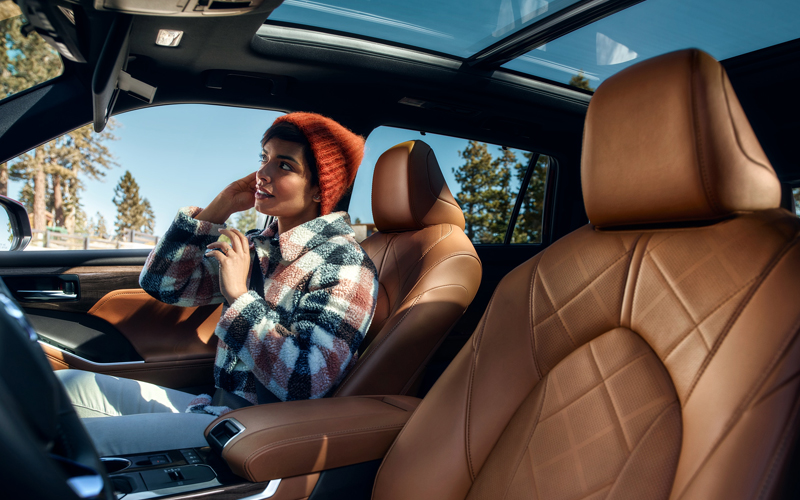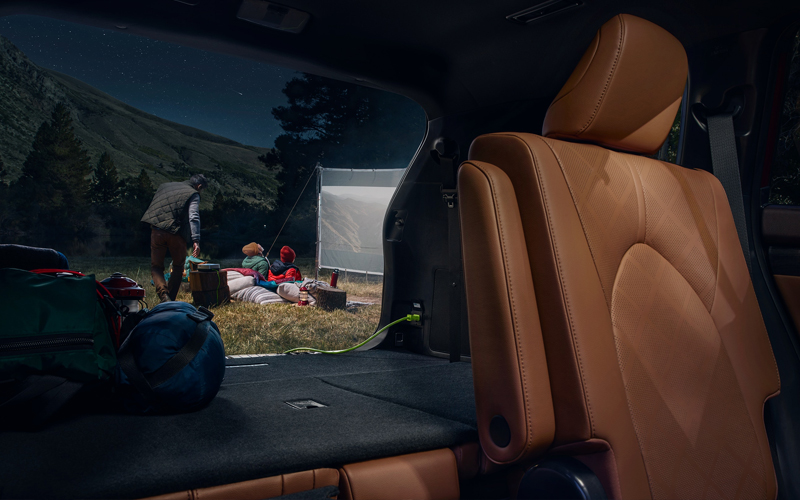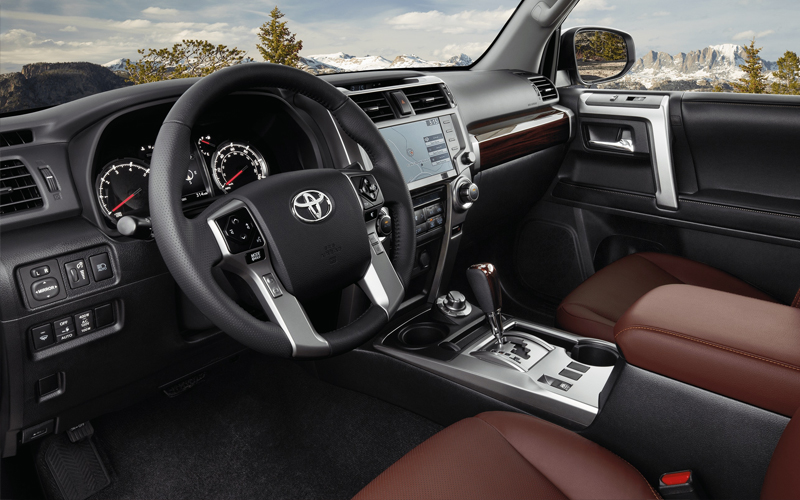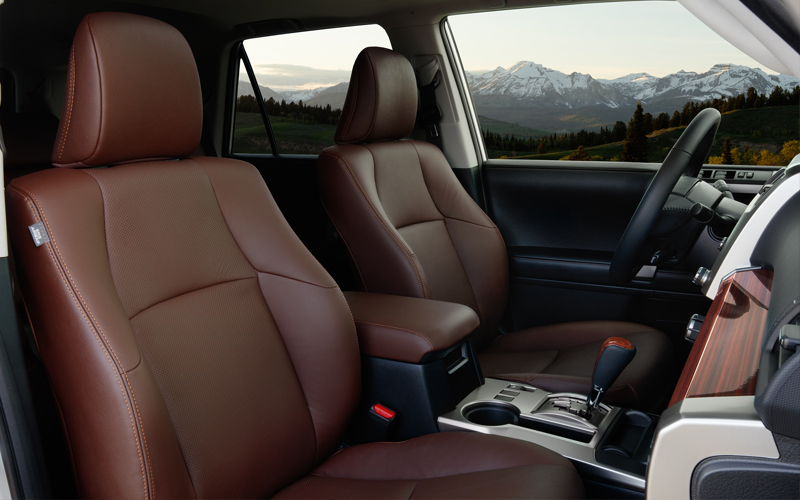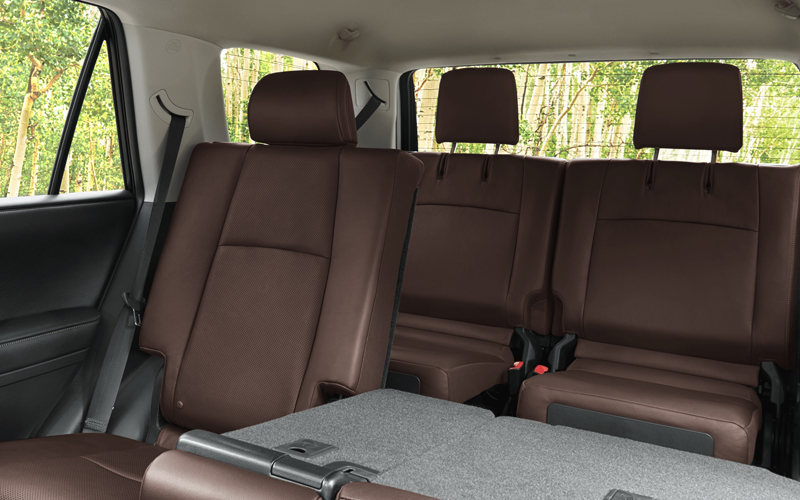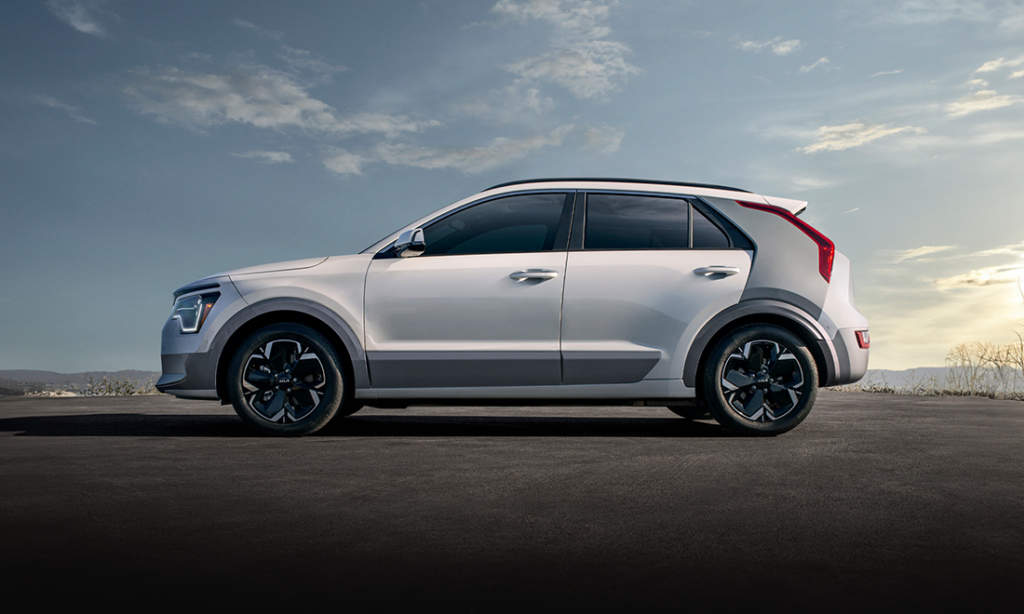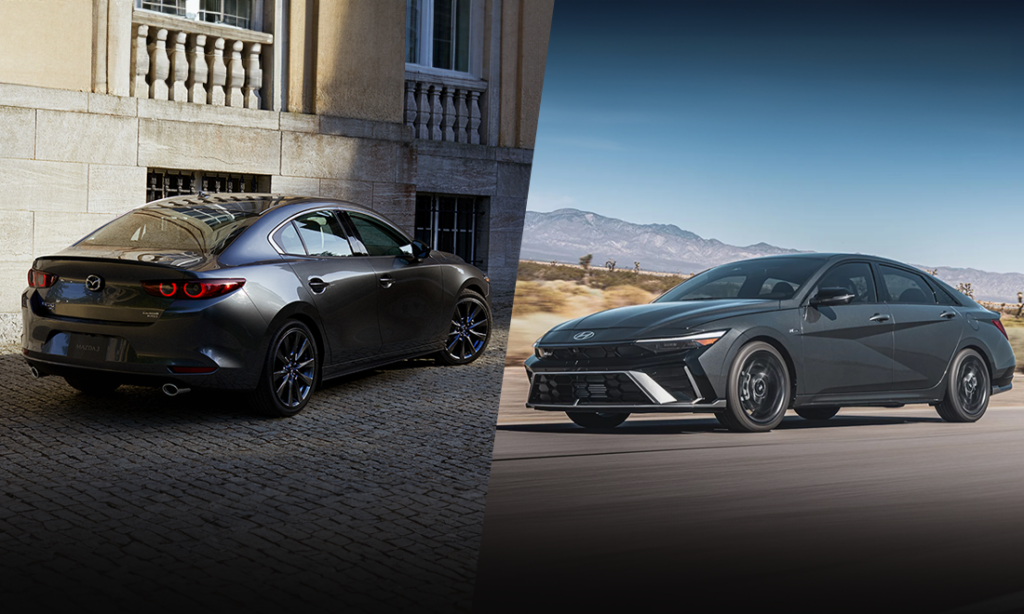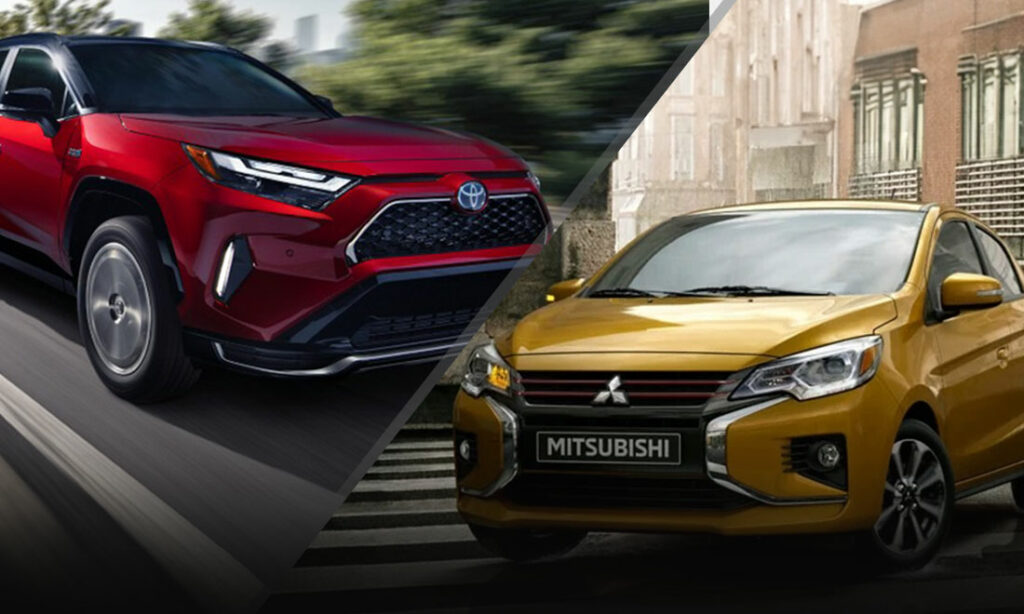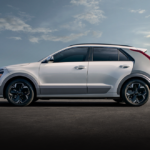Toyota’s two mid-sized SUVs have very different purposes and personalities. Here’s what sets the 4Runner vs Highlander apart.
Two Roads Diverged
For the uninitiated walking into a Toyota dealership and seeing the Highlander and 4Runner side by side, an obvious question arises: why does Toyota offer two different SUVs of such similar dimensions? Cosmetics can’t be the only reason (the Highlander and 4Runner are quite distinct from one another). Indeed, their differences go far beyond facia and a 1.6-inch difference in ride height.
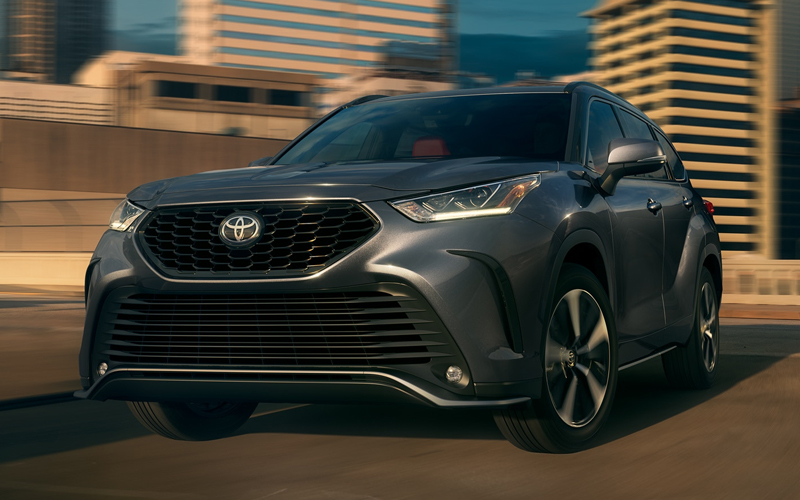
2021 Toyota Highlander – toyota.com | Shop new Toyota Highlander on Carsforsale.com
The Highlander and 4Runner exist to cover two distinct demographics of SUV buyers. One targets those looking for a pavement-bound family hauler and the other courts buyers looking for a legitimately rugged off-roader. That Toyota saw these two divergent goals and, rather than trying to meld them into one vehicle, and thereby compromising on both, they have kept them separate. The real benefit for Toyota in keeping the 4Runner around is maintaining a brand relationship with the real outdoor/4×4 enthusiasts or those who aspire to that lifestyle. Jeep has done the same with their Wrangler and, well, the rest of their SUV lineup.
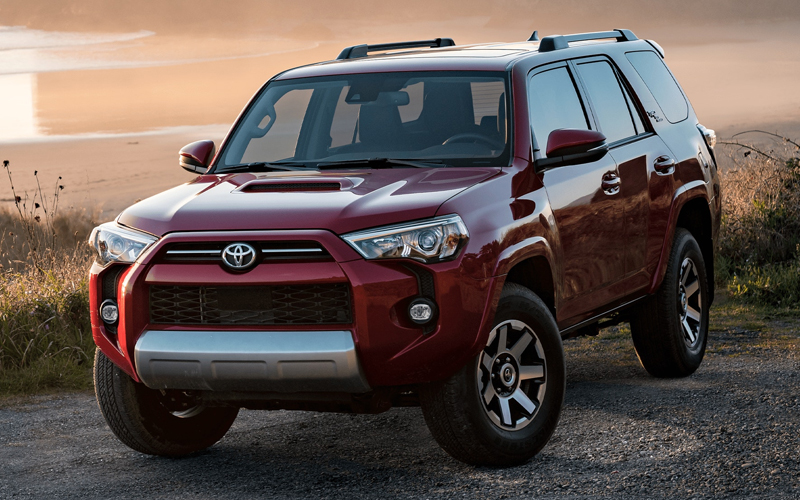
2021 Toyota 4Runner – toyota.com | Shop new Toyota 4Runner on Carsforsale.com
But how much does the 4Runner sacrifice in terms of modern comforts in order to be this capable? And conversely, how much has the Highlander given up in trying to keep everyone in the family happy? We identify five key differences that set the 4Runner vs Highlander apart.
One: Power and Drivetrains
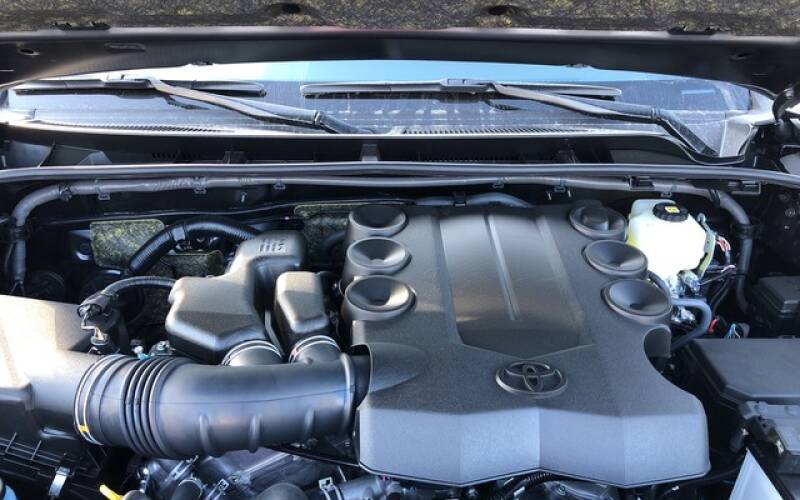
The 4Runner comes with a single engine option, a 4.0L V6 making 270hp and 278lb.-ft. of torque paired with a 5-speed automatic transmission. It’s available in rear-wheel drive, part-time four-wheel drive or full-time all-wheel drive variants. The V6’s fuel economy is one of the 4Runner’s greatest weaknesses at just 16 city and 19 highway mpg. Towing capacity maxes out at 5,000lbs.
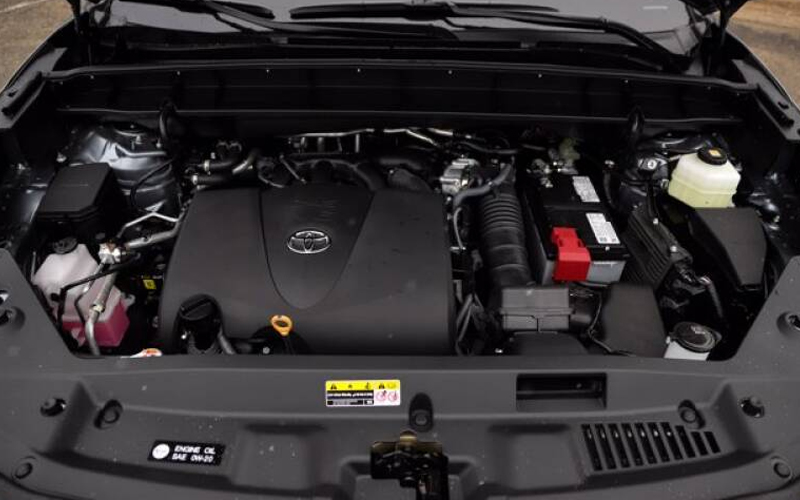
The Highlander comes with two options. The first is a 3.5L V6 making 295hp and 263lb.-ft. of torque mated to an eight-speed automatic transmission. Fuel economy is more in line with segment competitors at 21 city/ 29 highway for the FWD version and 20/27 for the AWD version. The second option is a hybrid powertrain featuring a 2.5L 4-cylinder engine and two electric motors producing a combined 243hp and 175lb.-ft. of torque. Power is transferred via an electric CVT. Fuel economy here is an impressive (for a mid-sized SUV) at 36/35 FWD and 35/35 for AWD. Towing also maxes out at 5,000lbs. in the Highlander.
Two: Dimensions
At a distance, the Highlander and 4Runner look to be about the same size but they do in fact differ, both inside and out. The Highlander is the longer and shorter in height of the two measuring 195” L x 76” W x 68” H while the 4Runner is conversely shorter in length and taller at 190” L x 76” W x 72” H.

Those differences outside translate into the cabins as well. Legroom is roughly equal up front with 42 cu. ft. for the Highlander and 41.7 cu. ft. for the 4Runner. Second row passengers in the Highlander get a bit extra with 41 cu. ft. to the 4Runner’s 32.9 cu. ft. Despite this considerable difference, the 4Runner still has plenty of second-row space, just not as much as the super generous Highlander. The situation reverses in the third row (optional in the 4Runner) where the Highlander is a bit stingier with just 27.7 cu. ft. to the 4Runner’s 29.3 cu. ft. Those extra 2 cu. ft. don’t add a whole lot, and neither third row will be very comfortable for anyone but children.
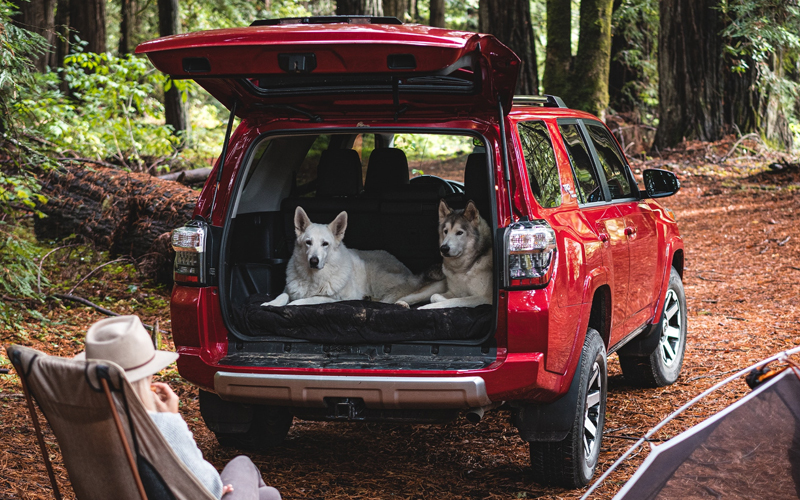
While the Highlander wins in passenger room, the 4Runner offers more in the cargo department. The Highlander offers 16 cu. ft. behind the third row, 48.4 behind the second and a grand total 84.3 cu. ft. of cargo capacity. The two-row 4Runner splits 47.2 and 89.7 cu. ft. while the three-row version has only 9.0 cu. ft. behind the third row, 46.3 behind the second row and 88.8 cu. ft. in total. Consequently, your choice between the Highlander and 4Runner may depend on whether you’re looking to haul people or gear.
Three: On-road and Off
Driving, both on pavement and off the beaten path, is the raison d’etre for Toyota’ two mid-size SUVs. The Highlander provides the domesticated, from-the-mall-to-grandma’s-house manner you expect from a family-oriented SUV. The 4Runner isn’t as refined on tarmac but proves composed and supremely capable off-road.
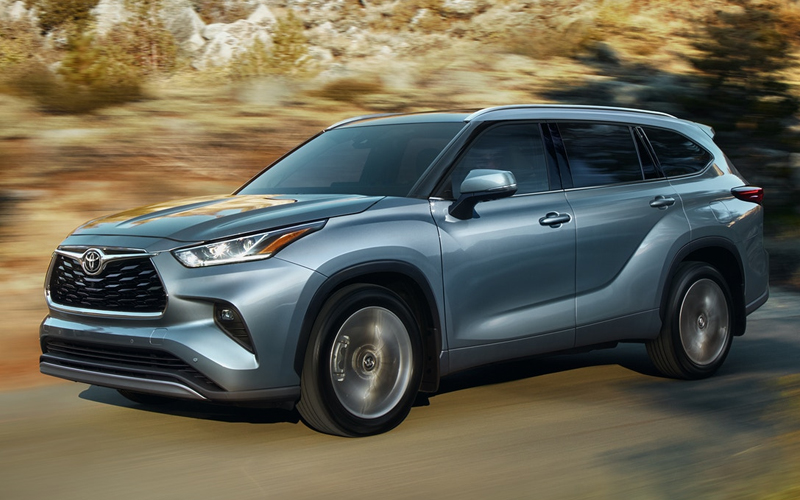
The Highlander is well damped and contends ably with choppy road surfaces. Body lean is decently well controlled for a vehicle of its size. Eight inches of ground clearance, along with the optional AWD, ensure you’re still getting enough SUV for snowy weather and the occasional dirt road.
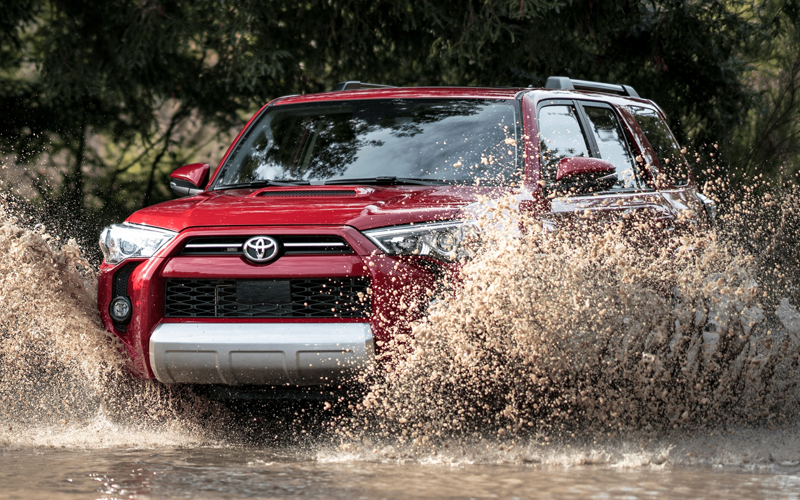
The 4Runner is built as an off-road vehicle first, with all other considerations coming after. Around town, the 4Runner’s not the most graceful of SUVs and its pickup truck underpinnings become clearly evident. Body lean is pronounced and the off-road tuned suspension makes for a bouncy experience over potholes and degraded pavement.
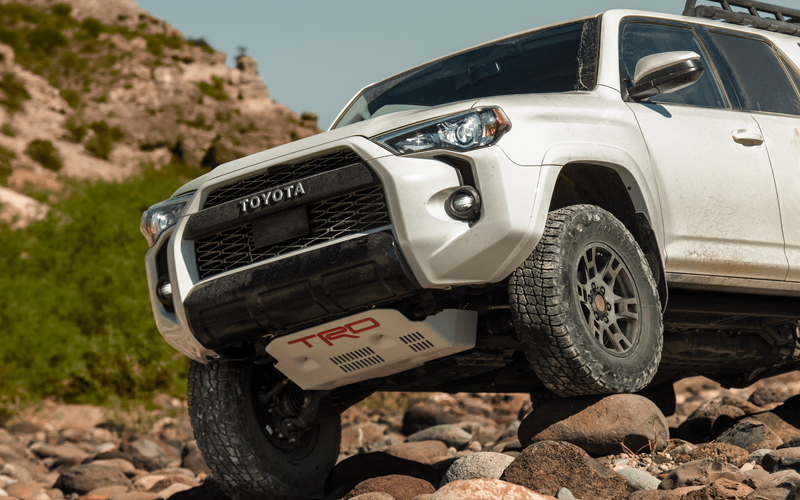
But like the Wrangler and Toyota’s own Land Cruiser, the 4Runner is meant to venture off road, and there it really shines. Things start off with a ground clearance of 9.6 inches and approach/departure angles are 33°/26°. Off-road features include a locking rear differential, electronic disconnecting sway bars, and skid plates. The Venture Special Edition adds Multi-Terrain Select and Crawl Control. The TRD-Pro ups the ante with a re-tuned suspension, Fox shocks, and 17-inch alloy wheels fitted with Nitto Terra Grappler all-terrain tires. (Insert Tim Allen grunting here.)
Four: Interior and Features
In keeping with their divergent purposes, the interiors of the 4Runner and Highlander differ in focus. The 4Runner offers a more spartan, utilitarian interior. Hard plastics are in abundance, but everything is solidly put together with longevity clearly in mind. The Highlander offers a more modern design and nicer materials, especially once you start climbing the trim levels. While not quite as swanky as the twin rivals of the Hyundai Palisade/Kia Telluride, the Highlander is close behind.
A similar story plays out with the infotainment systems. While the 4Runner is content with a single 8-inch touchscreen option, the Highlander can upgrade from a standard 8-inch screen to a larger 12.3-inch touchscreen. Both systems feature Android Auto and Apple CarPlay, Bluetooth, Sirius XM radio, but the Highlander also offers Amazon Alexa.
Additional features and options on the Highlander include wireless charging, heated and ventilated front seats, a panoramic moonroof, hands-free power lift gate, LED headlights, ambient lighting, and Toyota’s Driver Easy Speak (one-way intercom). The standard 6-speaker stereo can be upgraded to an 11-speaker JLB sound system.
The 4Runner keeps things a bit simpler with options like a power moonroof (not panoramic, gasp!), navigation, keyless entry, a power lift gate, beverage cooler, 120-volt outlet, and a 15-speaker JLB stereo. The TRD-Pro trim package adds all-weather floor mats and a sliding rear deck rated up to a 440lbs. weight capacity.
Five: Looks
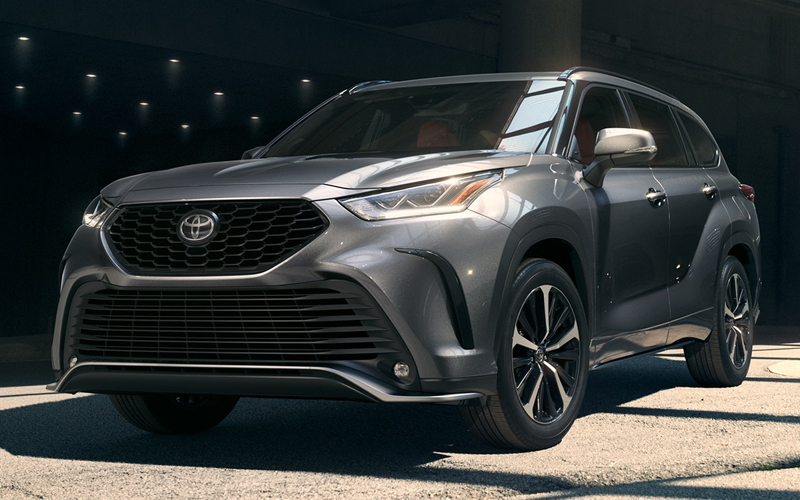
2021 Toyota Highlander – toyota.com | Shop new Toyota Highlander on Carsforsale.com
All these differences in purpose and personality are translated through the overall appearance of the Highlander and 4Runner. The new XSE trim on the Highlander adds some refinement to an already sharp-looking SUV. With that said, the Highlander doesn’t do a lot to reinvent the SUV mold, it remains a bulky-looking vehicle smoothing over that fact with lines borrowed from smaller Toyotas like the RAV4 and Avalon.
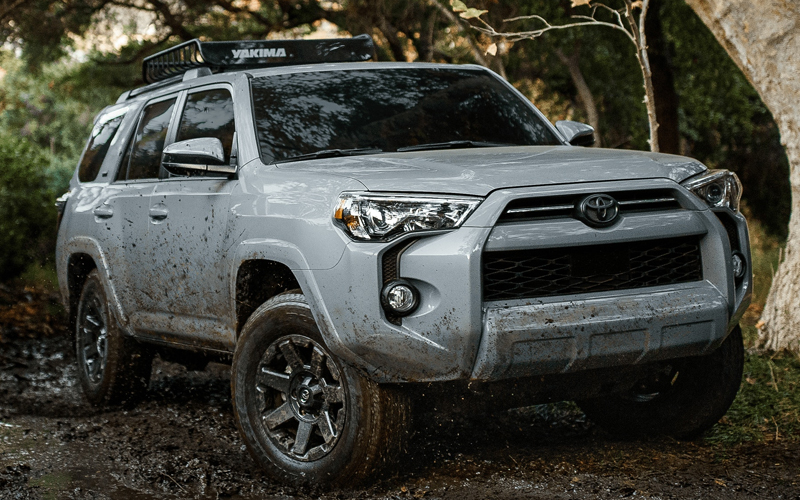
2021 Toyota 4Runner – toyota.com | Shop new Toyota 4Runner on Carsforsale.com
The 4Runner also shares a lot with a Toyota stablemate, in its case the Toyota Tacoma. Lines are simpler and more pronounced, the grille menacing. The 4Runner exudes rough and ready toughness.
Takeaways
Despite their similarities, the Highlander and 4Runner are two very different vehicles with distinct purposes. For the more family friendly, everyday commuter, the Highlander matches up well with the best in the segment (and the hybrid offers excellent fuel economy for its size). The 4Runner is purpose built for getting away from civilization and taking that road less traveled by. If you’re not seriously in need of the 4Runner’s off-road capabilities, we suggest sticking with the more generally appealing Highlander.
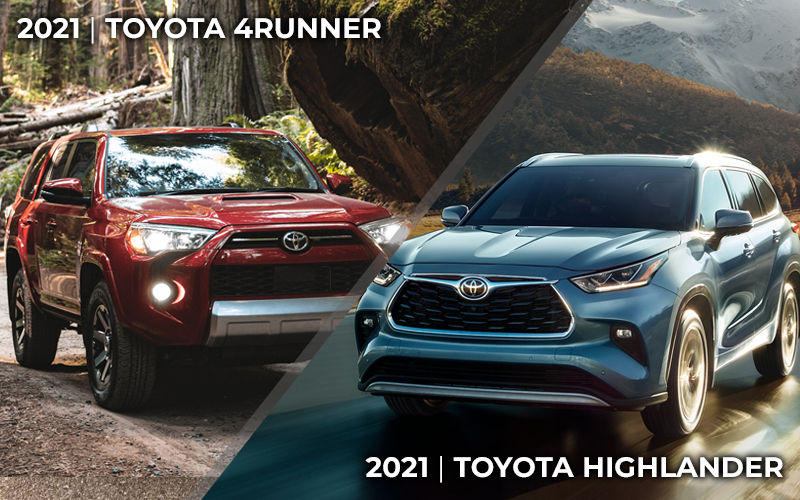
toyota.com | Shop Toyota on Carsforsale.com


